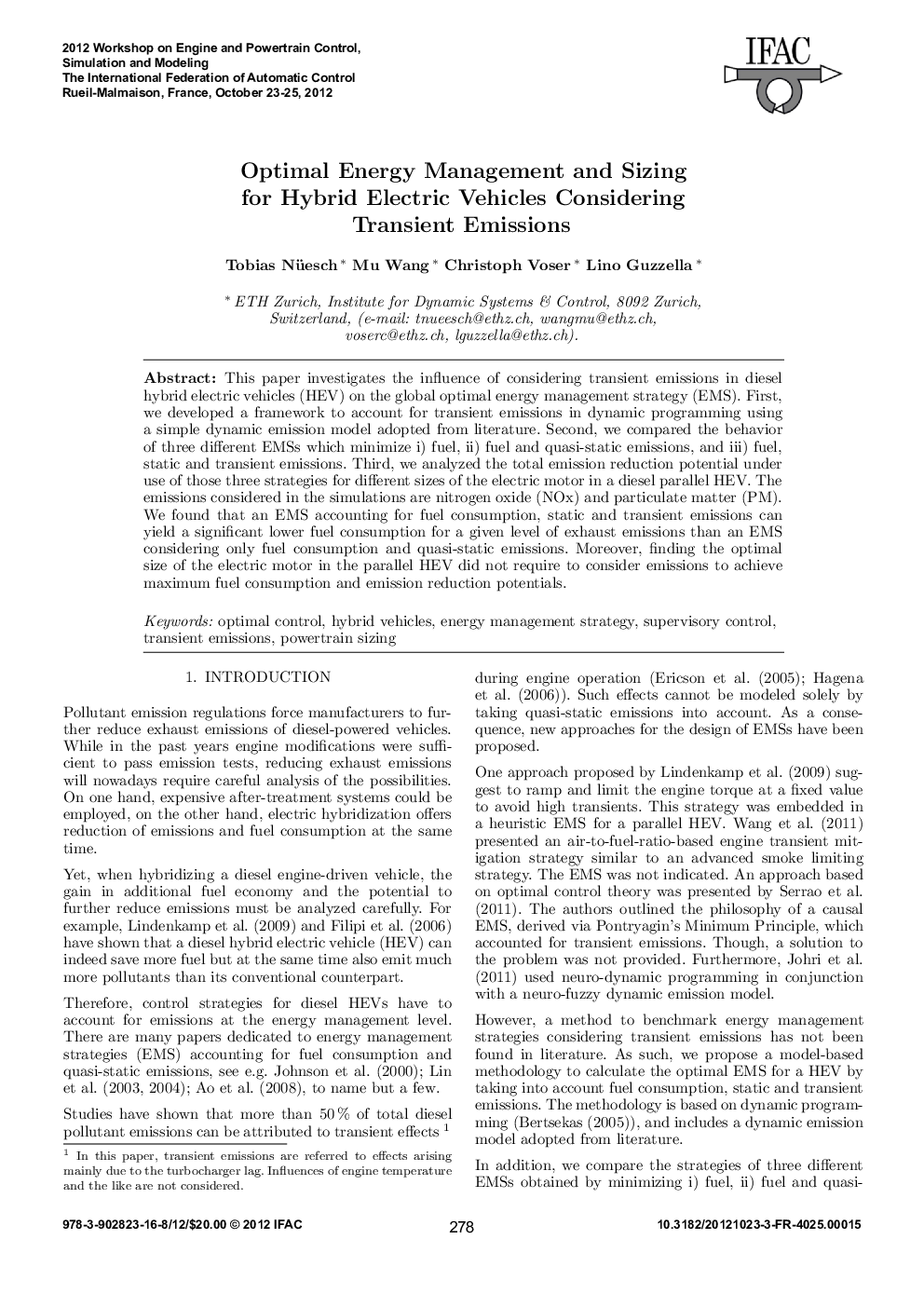| Article ID | Journal | Published Year | Pages | File Type |
|---|---|---|---|---|
| 713827 | IFAC Proceedings Volumes | 2012 | 8 Pages |
This paper investigates the influence of considering transient emissions in diesel hybrid electric vehicles (HEV) on the global optimal energy management strategy (EMS). First, we developed a framework to account for transient emissions in dynamic programming using a simple dynamic emission model adopted from literature. Second, we compared the behavior of three different EMSs which minimize i) fuel, ii) fuel and quasi-static emissions, and iii) fuel, static and transient emissions. Third, we analyzed the total emission reduction potential under use of those three strategies for different sizes of the electric motor in a diesel parallel HEV. The emissions considered in the simulations are nitrogen oxide (NOx) and particulate matter (PM). We found that an EMS accounting for fuel consumption, static and transient emissions can yield a significant lower fuel consumption for a given level of exhaust emissions than an EMS considering only fuel consumption and quasi-static emissions. Moreover, finding the optimal size of the electric motor in the parallel HEV did not require to consider emissions to achieve maximum fuel consumption and emission reduction potentials.
